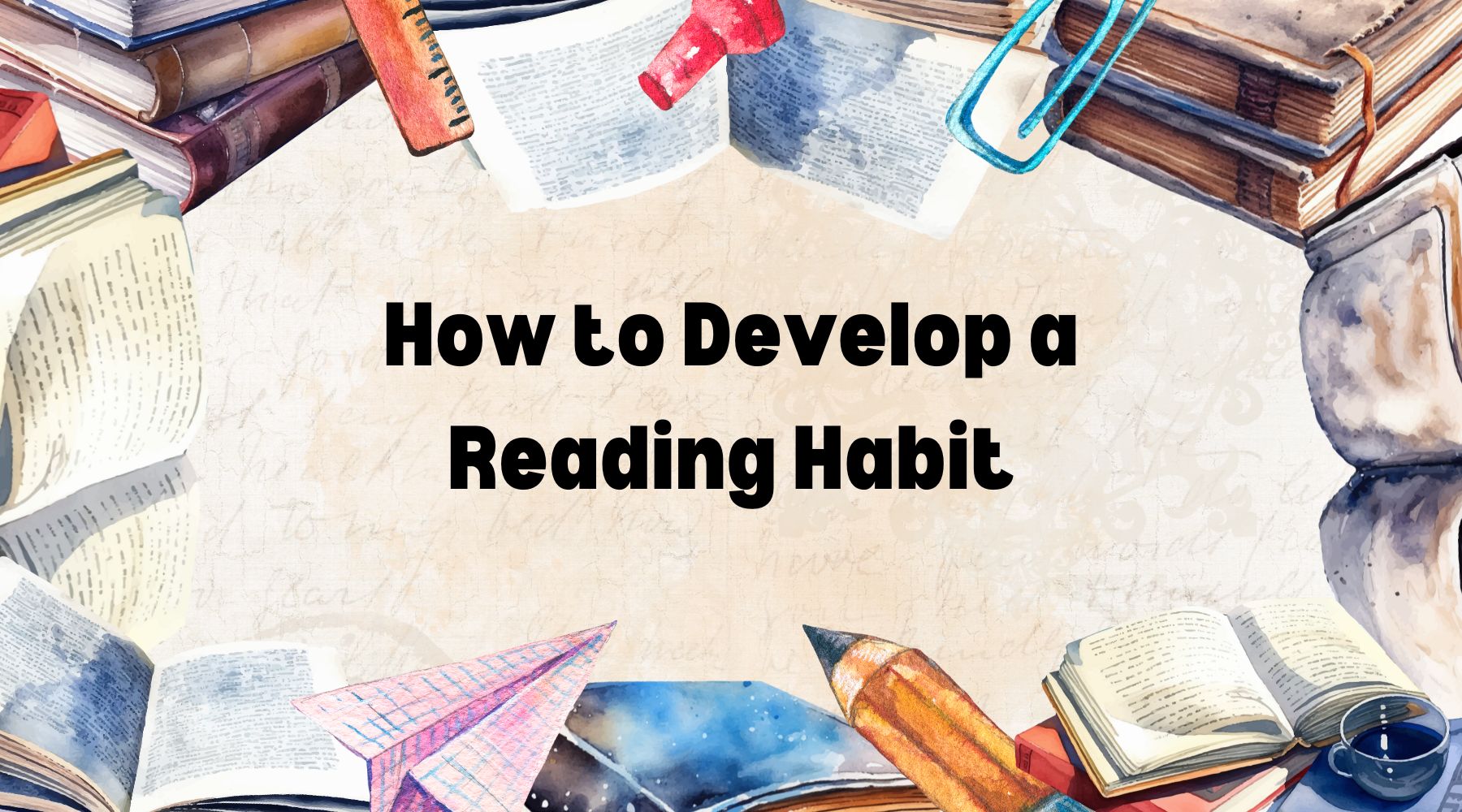Why Develop a Reading Habit (Or Improve Your Reading Speed)
Books are released at a pace faster than anyone can get through them. That’s why it’s common for bibliophiles to have To Be Read (TBR) lists in the dozens, sometimes having lists with several hundred books. If you calculate the length of time it takes you to read one book, then multiply that by the number of books on your TBR list, it can become evident that there’s no way you’ll get through them all in your lifetime. The only way to get through more of what you want to read is to develop a reading habit. It’s not just about getting through more books though.Some people struggle with active reading, find it mundane, stick to recommended reading lists related to only their course work, limiting the benefits that could be had from widening the genres they read. For those students, or young adults in general, they can find it hard to sit down and read. The younger you are when you learn how to develop a reading habit, the better you’ll be at solving problems. That’s because reading and writing proficiency directly correlate to improvements in creative thinking.
To enhance your creativity further, creative activities can be used, and in that category there are 3D puzzles like building or customizing book nook kits, and other types of crafts that can help personalize your reading space, such as DIY bookbinding techniques, and making fabric book covers. These are each activities that can be worked into designing a mini-home library. A cozy space in any room that you can call your reading zone.
9 ways to develop a reading habit
1. Set realistic goals for how long you’ll read

For those with hectic lifestyles, scheduling reading time is difficult. Particularly for those who need quiet to read. Some people can multi-task, like reading a book while listening to TV shows in the background. If you can do that, you’ll easily find more reading time. If you can’t, the best thing is to have your books with you to read on the fly.
2. Read when your day stops unexpectedly

Everyday, something stops us from doing things on our task list. You could be stuck in a traffic jam, be sat idle on public transport, or sitting in a waiting room for an appointment (that we’re usually told to arrive 10-minutes early for). Each of these types of setbacks can be time you can steal back if you bring your book with you.
3. Schedule time for reading

Many of us like to read in bed, or as part of a nightly routine. Others are too exhausted to keep their eyes focused on the text on the page. Reading time can be any time of the day when you’re sat down. As a relaxing activity, you may find it helps to read on your lunch break, or coffee break as a way to disengage from the stress of the day.
4. Journal So You Know what Books You’ll Love

It’s easier to develop a reading habit when you’re reading books you enjoy, from authors with a writing style that appeals to you. While it’s common to have a “To Be Read” list, the other list that helps is to use a “Did Not Finish” (DNF) list, and noting down the reason why you put the book down. Some people can persevere, but if a novel is causing you to procrastinate more than usual, there’s usually a reason. Know when to call it, add it to a DNF list, note down why and get stuck into the next book on your TBR list. Over time, your list will improve to be of quality reads that you’ll be excited to stuck into.
5. Reduce screen time

This is a big one. Technology is designed to steal our time. Escape the scroll by limiting the time spent on social media, streaming videos, and being disturbed by notifications. There are numerous productivity apps you can install on devices to limit certain activities online, such as blocking access to social media for a block of time, such as 30-minutes, or the entire day. These are handy for using techniques like the Pomodoro technique, which involves doing focused activities in 25-minute sessions followed by a 5-minute break. How many chapters could you get through in a single 25-minute session of focused reading time?
6. Have a dedicated reading space

Homes are designed to have dedicated spaces. The kitchen is where to cook. The dining room (or dining area) is for eating together. The bedroom, for sleeping. Just a tiny nook in the corner of a bedroom, a study, games room, the lounge, or under the staircase is usually sufficient to transform into a reading nook. All you need is a comfy, inviting reading chair like a tub chair, or an adult bean bag, or a matching set of a chair and ottoman to read with your feet up. The only other essential to a reading nook is the lighting. Have reading lights near the seating to create an ambient environment. The more inviting the atmosphere, the more likely it is you’ll use it. Include a bookcase, or a range of bookshelves, and decorate the bookshelves with meaningful items.
7. Remove distractions

This ties into #5 above about reducing screen time. Here’s the thing though, sometimes, you’ll explore a new author and read a word that you dont' know the meaning of. It’s tempting to grab your phone, and look up the meaning of a word. When you reach for the phone, all sorts of apps are vying for your immediate attention. A simple way to remove that barrier is to have a dictionary nearby. Obviously, that’s not practical when you’re reading on the go, but for reading more at home, keep a dictionary nearby your reading seat. If you’re the type of person to understand vocabulary better through similar words that mean the same thing, have a thesaurus nearby.
8. Read more than one book at a time

When you’re struggling to develop a habitual reading habit, this one may surprise you. Different authors in various genres have different writing styles. Some use long and drawn out paragraphs, while others have a more relaxed prose making use of small sections, headers, bullet lists, and subheadings. This type of style is better suited to short reading sessions because once you get back to it, there’s less re-reading involved than you would with a book with a 30-page chapter. If you’re partially through reading a novel with meaty paragraphs, it’s unlikely you’ll pick it up when you sit down for a 15-minute to half-hour coffee break. That’s what meant by reading different books at the same time. Have a book for coffee breaks, and another you read as scheduled reading at home. A time slot you’ve set aside for reading.
9. Make it easy to pick up a book

Any habit is easier to maintain when you make it easy on yourself. When you go on a diet, you don’t stock up on chocolates and cookies. You remove temptation, then when you go to the kitchen for a snack, it’s only healthy choices that are there. The same can be done with reading. Put books where you’ll be later in the day when you plan to read. If that’s in bed, when you make your bed in the morning, put a book on the pillow rather than the bedside table. At least that way, you have to pick it up and make a conscious decision to put it down and not read it. You'll probably find just that subtle reminder is enough for you to read some pages once you're settled in.




Share:
Bookish Gifts for Gen X Men
Fantasy Wall Art Ideas for Decorating Bookshelves